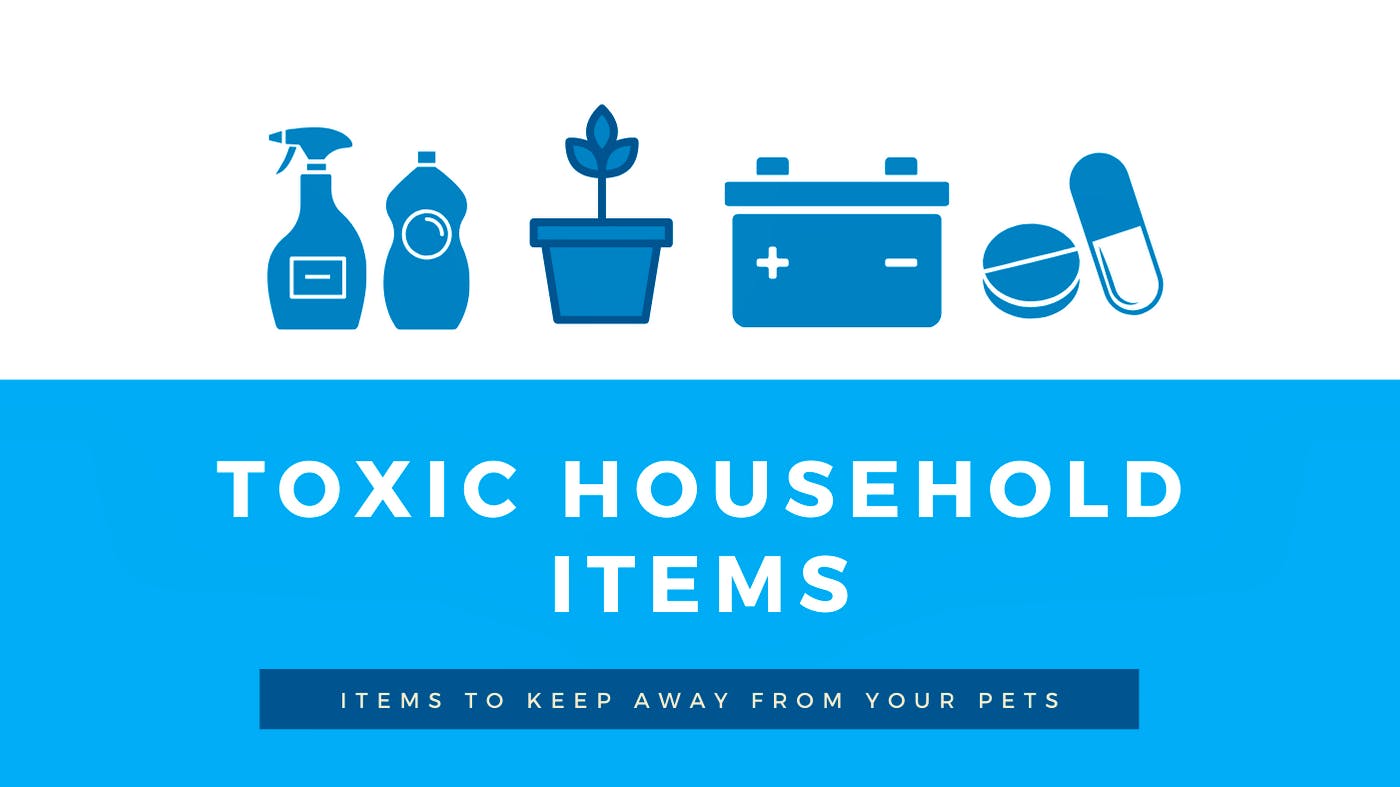
Even though we may think that our homes are (relatively) pet-safe, there’s many common household items that are toxic to our four-legged friends, and we’re not just talking about food! Dogs will be dogs, and this means they’re prone to “taste testing” inedible objects and foods, which can be fatal.
From cleaning agents, plants and medication, it’s important to store these items out of sight, safely away from your pets.
Some of these items will be common knowledge to many people, but some aren’t as obvious.
PLANTS
- Autumn Crocus
- Azalea
- Cyclamen (also known as Alpine Violet or Persian Violet)
- Daffodil
- Dieffenbachia (also known as Dumb Cane)
- Hyacinth
- Tulips
- Kalanchoe (also known as Coral Bels and Winter Bells)
- Lily
- Oleander
- Sago Palm
- Foxglove
- Rhododendron

GENERAL HOUSEHOLD ITEMS
- Baits (Rodent, snails, slugs etc)
- Insecticides
- Fertiliser
- Compost
- Pool Chemicals
- Salt Water
- Batteries
- Cleaning Products
- Anti-Freeze
- Paint
- Paint Thinner
- Lead
- Zinc
- Foil
- Human Medication
- Human Vitamins (particularly Vitamin D)

FOOD
- Xylitol – found in sugar-free food (particularly gum and some lollies)
- Chocolate
- Onions
- Coffee
- Garlic
- Most Fruit Pits and Seeds
- Raisins and Dates
- Walnuts and Macadamia Nuts
- Grapes
- Avocados
- Salt
- Alchohol
- Coconut Water
- Yeast Dough

Did you know, one of the most common things dogs get into is pest control baits, so it’s important to not only keep them safely away from your dogs, but to make sure that if you’re using a professional pest control service, ask them about their pet-safe options.
Whilst it’s still not healthy for a dog to ingest any form of bait, regardless of whether it’s labelled as ‘pet-safe’, the pet-safe option is always a much safer way to go with less chance of a fatal prognosis.
There’s also quite a few options that are safe for wildlife too, which is important when choosing your pest control products.
If you’re opting for purchasing your own baits, make sure they’re put into lock-boxes. This minimises the chance of your dog getting into the bait, but for more destructive pooches, you’ll need to make sure these are strategically placed around your property, so they are not near your dog.
Lastly, if your dog is displaying any symptoms of being unwell (vomiting, diarrhoea, nausea, pale gums, tremors or convulsions) please take your dog to an emergency vet, don’t wait.

